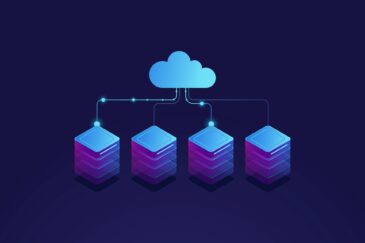Essential Best Practices for Successful ERP Implementation

Successful ERP implementation requires careful planning, execution, and regular optimization to ensure that it aligns with business goals and delivers long-term value. A well-structured ERP implementation enhances operational efficiency, improves data accuracy, and supports informed decision-making. However, without a clear strategy, businesses may face cost overruns, resistance to change, and system inefficiencies. Following a proven methodology helps organizations minimize risks and make the most of their ERP investment.
1. Planning & Strategy
- Define Clear Business Objectives
Establishing clear ERP goals ensures alignment with business priorities such as efficiency, cost reduction, and improved data visibility. Well-defined objectives help measure success and guide decision-making throughout the implementation process. - Obtain Executive Sponsorship
Leadership support is crucial for securing funding, resources, and strategic alignment during ERP implementation. Executives play a key role in driving adoption, overcoming resistance, and ensuring long-term success. - Assemble a Cross-Functional Team
Engaging stakeholders from finance, IT, operations, and other departments ensures that the ERP system meets company-wide needs. A diverse team helps identify challenges early and promotes smoother adoption across the organization. - Conduct a Thorough Needs Assessment
Analyzing current workflows and inefficiencies helps define ERP requirements that align with business goals. A well-conducted assessment ensures the system supports process improvements rather than automating outdated practices. - Choose the Right ERP System
Selecting an ERP involves evaluating vendors for industry fit, scalability, integration capabilities, and cost-effectiveness. The right system should meet current needs while allowing for future growth and adaptability. - Develop a Realistic Budget
A comprehensive budget should include software, implementation, customization, training, and ongoing maintenance costs. Proper financial planning prevents cost overruns and ensures a strong return on investment.
2. Implementation & Deployment
- Follow a Phased Approach
Implementing ERP in stages, starting with core modules like finance and inventory, reduces risk and allows for gradual adjustments. This approach minimizes disruptions and will enable employees to adapt before expanding to other areas. - Ensure Strong Data Governance
Cleaning, standardizing, and validating data before migration prevents errors and enhances reporting accuracy. Strong data governance ensures regulatory compliance and builds trust in the ERP system’s outputs. - Prioritize Change Management
Clear communication, hands-on training, and leadership support help employees understand the benefits of ERP and ease the transition. Addressing resistance early fosters acceptance and accelerates user adoption. - Optimize Business Processes First
Refining workflows before ERP implementation prevents automating inefficiencies and maximizes system benefits. Streamlined processes improve operational efficiency and ensure a better return on investment. - Customize with Caution
Excessive ERP modifications can increase complexity, costs, and future maintenance challenges. Limiting customizations ensures smoother updates and a more sustainable system. - Ensure System Integration
Connecting ERP with essential tools like CRM, SCM, and BI eliminates data silos and improves decision-making. Seamless integration enhances efficiency and provides real-time insights across departments. - Test Extensively
Conducting user acceptance, performance, and security testing helps identify and resolve issues before they go live. Thorough testing ensures a smooth system launch while reducing the risk of disruptions.
3. User Adoption & Training
- Provide Comprehensive Training
Role-based, hands-on training ensures employees understand their specific tasks within the ERP system. Continuous training improves user confidence, reduces errors, and accelerates system adoption. - Create a Knowledge Repository
A central hub with ERP documentation, FAQs, and guides empowers users to troubleshoot issues independently. Self-service resources reduce IT dependency and support long-term user proficiency. - Encourage Super Users & Champions
Identifying and training super users helps create internal ERP experts who assist colleagues and reinforce best practices. These champions drive adoption, answer questions, and enhance overall system effectiveness. - Set Up a Support System
A dedicated helpdesk or ticketing system ensures quick resolution of user issues, minimizing disruptions. Reliable support improves user experience and helps maintain productivity during and after ERP implementation.
4. Post-Implementation Optimization
- Monitor Performance & KPIs
Tracking key metrics like efficiency, uptime, and user adoption helps assess ERP effectiveness and identify areas for improvement. Regular performance reviews ensure the system meets business objectives and delivers expected benefits. - Regularly Update & Maintain the System
Applying updates, security patches, and new features keeps the ERP system secure, stable, and compliant with regulations. Proactive maintenance prevents system vulnerabilities and ensures compatibility with evolving business needs. - Optimize Workflows Continuously
Regularly analyzing and refining business processes helps eliminate inefficiencies and maximize ERP functionality. Adapting workflows ensures the system remains aligned with operational goals and industry best practices. - Evaluate ROI Periodically
Comparing ERP costs with measurable benefits, such as cost savings and productivity gains, ensures the system delivers value. Businesses should adjust strategies, optimize usage, or explore additional features if ROI falls short.
5. Security & Compliance
- Implement Role-Based Access Control (RBAC)
Limiting access based on user roles enhances security by preventing unauthorized modifications and data breaches. A well-structured RBAC framework ensures employees can only access the information necessary for their tasks. - Ensure Regulatory Compliance
Configuring ERP systems to meet industry regulations like GAAP, GDPR, and HIPAA helps automate compliance and reduce legal risks. Maintaining accurate audit trails and reports ensures transparency and regulatory adherence. - Conduct Regular Security Audits
Periodic assessments of access controls, encryption, and vulnerabilities help identify and mitigate security risks. Proactive audits strengthen ERP defenses and ensure data protection against evolving threats. - Establish Disaster Recovery & Backup Plans
Automated backups and a well-defined recovery plan protect critical ERP data from cyberattacks, hardware failures, or system crashes. A structured disaster recovery strategy minimizes downtime and ensures business continuity.
6. Vendor & Third-Party Management
- Establish Strong Vendor Relationships
Maintaining open communication with ERP vendors ensures timely support, system updates, and best practice recommendations. A strong partnership also simplifies licensing negotiations and future system enhancements. - Evaluate Third-Party Integrations
Ensuring external applications are compatible, secure, and reliable prevents inefficiencies and data inconsistencies. Proper integration enhances system functionality and improves overall business operations. - Negotiate SLAs
Clearly defined service-level agreements (SLAs) set expectations for system uptime, support response times, and issue resolution. Strong SLAs help ensure consistent performance and minimize disruptions. - Plan for Growth
Choosing a scalable ERP with cloud capabilities allows businesses to expand without costly re-implementations. A future-ready system supports increased transaction volumes, users, and locations as the company grows. - Leverage AI & Analytics
AI-powered automation streamlines processes, while real-time analytics provide actionable insights for better decision-making. Leveraging these capabilities improves efficiency, forecasting, and operational performance. - Stay Updated on Industry Trends
Keeping up with emerging technologies like RPA, blockchain, and IoT ensures the ERP system remains competitive. Adopting new innovations enhances productivity, security, and long-term business agility.
Oracle ERP Cloud Implementation Methodology
Implementing Oracle ERP Cloud Services requires a structured approach to achieve real business value. Oracle recommends an ideal methodology that includes key phases: planning, configuration, testing, deployment, and post-go-live support. It all starts with understanding your business inside out. Then, the system is configured to match your industry-specific processes. Data migration, system integrations, and user training are essential components to ensure a seamless transition. A phased rollout strategy is often recommended to minimize risk and allow for adjustments before full-scale deployment.

Copyright © 2025 Rite Software Solutions & Services LLC. All rights reserved.



